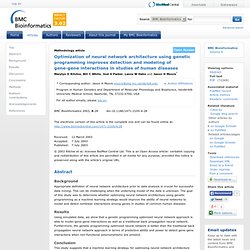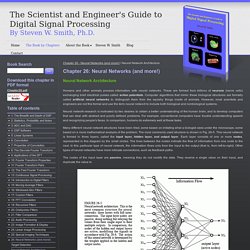

Is Google a Neural Network? Firstly, what do we mean by Google in this context?

For the purposes of this discussion, we refer to Google as a combination of a search engine and an instantaneous results set across all web site and blog resources worldwide. Now, the last numbers I saw (Feb 2010) estimated 750 million websites worldwide, plus 200 million blogs. There are of course other domains which Google also scans. Other figures suggest 25 billion indexed webpages (Netcraft March 2009), but that number will have grown a lot since then. Here, I use the term neural network not in the strict Artificial Intelligence sense, but in a more general sense. Now, consider the human brain as I understand it (a very simple model). The short and long term memory takes the form of synapses (junctions between brain cells). Sorry, where was I? Our ability to build new synapses falls off with age in most people. So, what use is this analogy to us?
(c) 2010 Phil Marks Are you thinking about building websites and doing some marketing? The Next Generation of Neural Networks. Epubs.surrey.ac.uk/532120/1/SCJ_HJS.pdf. Optimization of neural network architecture using genetic programming improves detection and modeling of gene-gene interactions in studies of human diseases. The detection and characterization of genes associated with common, complex diseases is a difficult challenge in human genetics.

Unlike rare genetic disorders which are easily characterized by a single gene, common diseases such as essential hypertension are influenced by many genes all of which may be associated with disease risk primarily through nonlinear interactions [1,2]. Gene-gene interactions are difficult to detect using traditional parametric statistical methods [2] because of the curse of dimensionality [3]. That is, when interactions among genes are considered, the data becomes too sparse to estimate the genetic effects. To deal with this issue, one can collect a very large sample size. However, this can be prohibitively expensive. Neural networks (NN) have been used for supervised pattern recognition in a variety of fields including genetic epidemiology [4-12].
Evolutionary structure optimization of hierarchical neural network for image recognition - Suzuki - 2012 - Electronics and Communications in Japan. Neural Network Structure. Get the entire book!

To study neural networks you must first become aware of their structure. A neural network is composed of several different elements. Neurons are the most basic unit. Neurons are interconnected. These connections are not equal, as each connection has a connection weight. The Neuron The neuron is the basic building block of the neural network. When a neuron produces output, that neuron is said to activate, or fire. Equation 2.1: Summing the Weight Matrix This sum must be given to the neurons activation function. Boolean thresholdFunction(double input) { if( (input>=5) && (input<=10) ) return true; else return false; } The above method will return true if the neuron would have activated, false otherwise.
There are several threshold methods that are commonly used by neural networks. The TANH activation method will be fed the sum of the input patterns and connection weights, as previously discussed. Equation 2.2: The TANH Function. Neural Networks. Abstract This report is an introduction to Artificial Neural Networks.

The various types of neural networks are explained and demonstrated, applications of neural networks like ANNs in medicine are described, and a detailed historical background is provided. The connection between the artificial and the real thing is also investigated and explained. Finally, the mathematical models involved are presented and demonstrated. Contents:
Neural Network Architecture. Humans and other animals process information with neural networks.

These are formed from trillions of neurons (nerve cells) exchanging brief electrical pulses called action potentials. Computer algorithms that mimic these biological structures are formally called artificial neural networks to distinguish them from the squishy things inside of animals. However, most scientists and engineers are not this formal and use the term neural network to include both biological and nonbiological systems.
Neural network research is motivated by two desires: to obtain a better understanding of the human brain, and to develop computers that can deal with abstract and poorly defined problems. For example, conventional computers have trouble understanding speech and recognizing people's faces. Many different neural network structures have been tried, some based on imitating what a biologist sees under the microscope, some based on a more mathematical analysis of the problem.